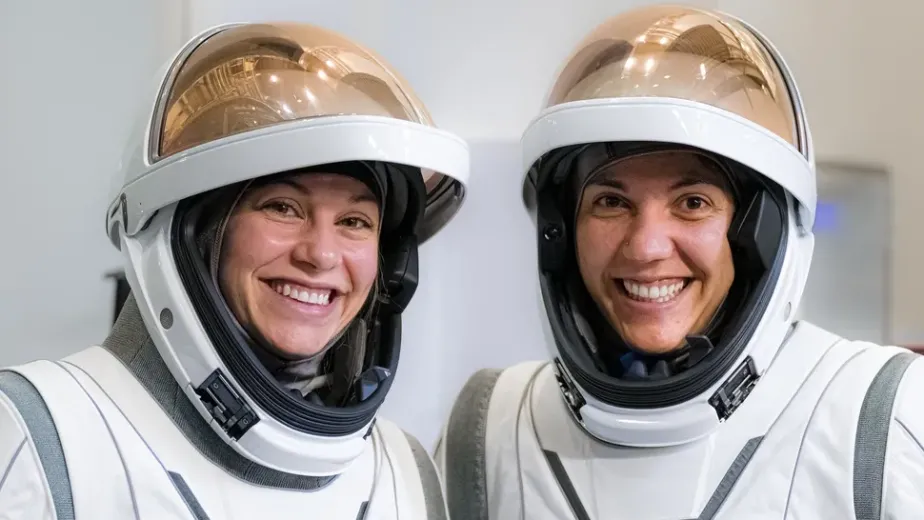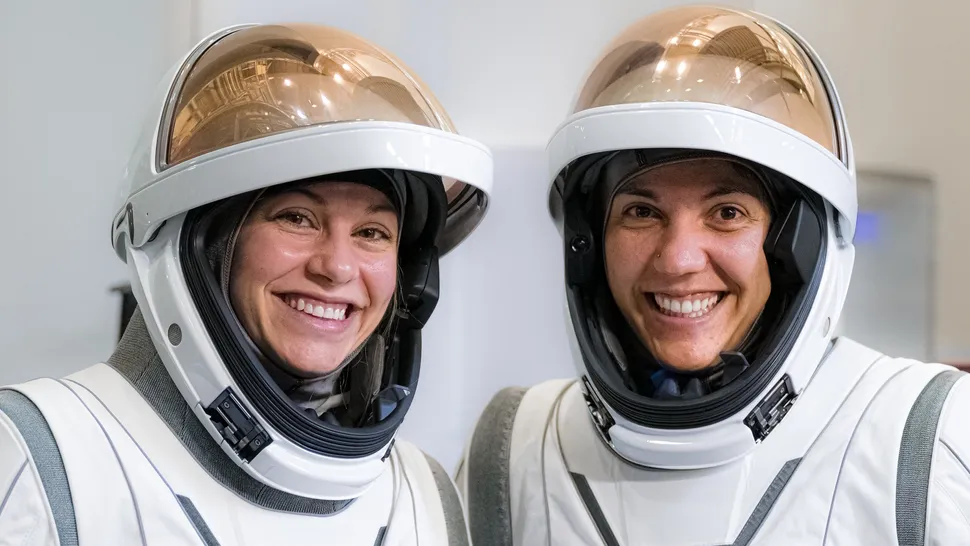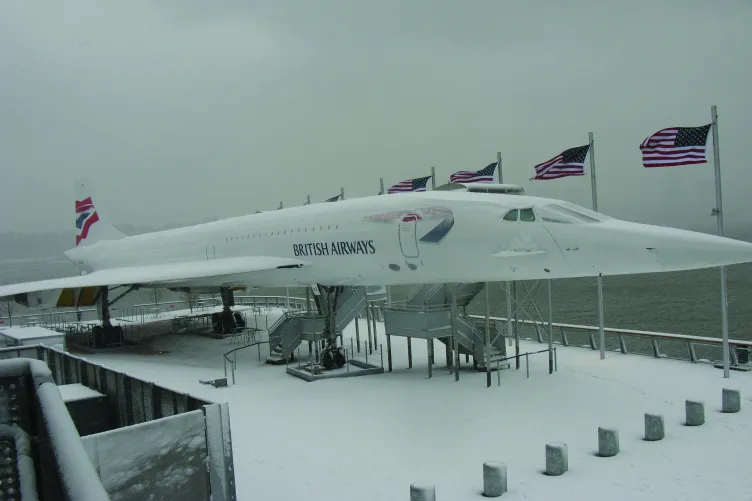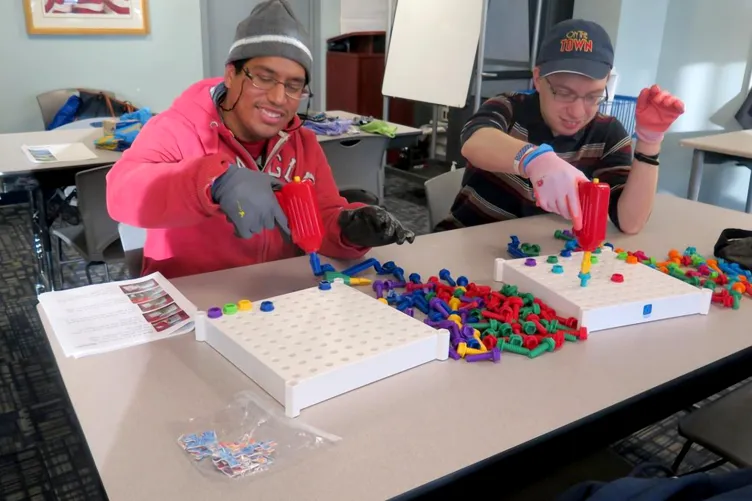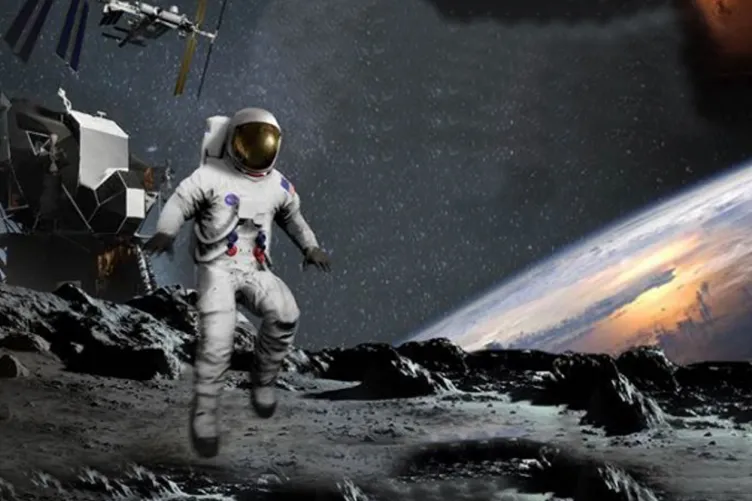
This Friday, the Intrepid Museum welcomes two trailblazing female astronauts for an inspiring edition of Astronomy Night at the Museum.
What inspired each of you to pursue careers in aerospace engineering and ultimately become astronauts?
AM: I fell in love with space in the fourth grade. I grew up in Houston, Texas and went on a field trip to NASA, where I got to experience an immersive day-in-the-life of a flight controller in mission control and an astronaut. I immediately fell in love with the work. This experience lit a fire in me to contribute to the industry with my career and ignited my dream of flying to space.
SG: I was raised to be a violinist, and hadn’t consider engineering until high school, when I met former NASA astronaut Joe Tanner. Hearing him speak sparked my curiosity about space, and it was his encouragement that made me consider studying engineering. I became fascinated by human spaceflight and started looking for a way to be part of that world. That path eventually led me to SpaceX, where I helped build the astronaut training program, getting an opportunity to support all our crews as they prepared to go to space. 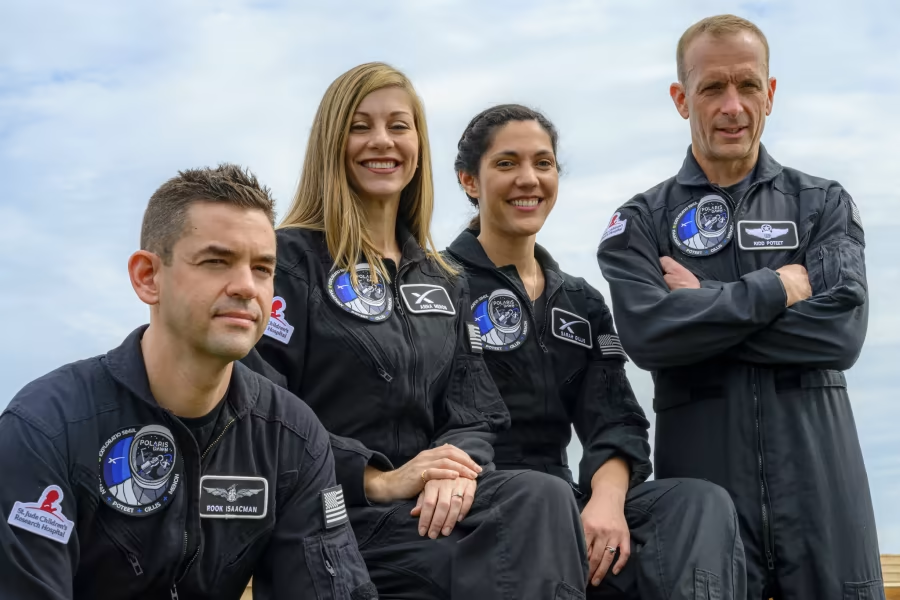
Polaris Dawn crew from left to right: Jared Isaacman, Anna Menon, Sarah Gillis Scott Poteet. (Photo credit: John Kraus/Polaris Program)
What was it like preparing for and executing the first commercial spacewalk?
AM: The spacewalk was one of the highlights of both mission preparation and execution for me. The preparation phase was iterative, detailed and extremely thoughtful. The speed with which SpaceX learns and develops never ceases to amaze me. For example, we'd perform a simulation with our spacesuit during training on a Friday, and by the following Monday, the suit would have a new arm and a slew of other enhancements to test out. The SpaceX teams worked tirelessly to perfect the hardware, software, operations and training to prepare for flight and ensure that no stone was left unturned. Then, when it came time to execute in space, it felt like clockwork. The entire operation went according to our training, and as a team, we were able to gather a lot of data, which will help inform future space suit and space walking advancements.
SG: Preparing for the first commercial spacewalk was a multi-year journey that pushed every part of the system—hardware, operations, training and human integration. We spent countless hours rehearsing in the suits, running through contingencies and fine-tuning the choreography down to the smallest motion. Stepping out of the hatch into the void of space was extremely surreal. In that moment, you’re completely reliant on the systems and people who got you there. It’s a humbling reminder of what’s possible when a team is fully committed to doing something that hasn’t been done before. And when the time came, both the operation and the suit performed exactly as expected—clear proof that the team's preparation and dedication had made all the difference.
What advancements in spacecraft or spacesuit technology were most critical to your mission’s success?
AM: There were a ton of advancements that were key to the mission’s success. One I'll highlight was the advancement of communications capabilities via the addition of Starlink laser technology on the mission. This was the first human spaceflight mission to test Starlink, and it required that our spaceship communicate with other Starlink satellites as we moved at orbital velocity above and below the Starlink shell. Lots of hard work went into making this work, but that resulted in flawless and nearly constant communication between our spacecraft and Earth. We were able to use it to share a violin concert by Sarah and youth orchestras around the world, as well as connect with mission control and say goodnight to our families via video calls before bed. It demonstrated itself to be a powerful tool for communication that will hopefully serve as a foundational resource in future space endeavors.
SG: We were developing entirely new technology from the ground up, which was one of the most challenging—and rewarding—aspects of the mission. The extravehicular activity (EVA) suit was a major advancement: a pressure suit purpose-built for use outside the Dragon spacecraft, integrating life support, mobility, telemetry and communications in a completely new way. Enabling the EVA also meant modifying Dragon itself—including upgrades to the life support system with a new repressurization capability, hardware to support the suit’s consumable, power and data needs and mobility aids to enable safe movement in a pressurized suit within the cabin. At the same time, we were testing high-bandwidth laser communications with Starlink—sending data over laser connections in space. Polaris Dawn set ambitious goals, and the fact that these systems performed exactly as needed speaks to the strength of the design, the rigor of the testing and the ingenuity across every team involved.
How did you celebrate milestones or achievements together during the mission?
AM: The mission isn't over until you're back on Earth, so as we moved through various milestones in the mission (such as high altitude, our spacewalk etc.), we acknowledged them, were grateful for each moment and applauded the larger team's efforts that helped make it possible, while also simultaneously staying focused. The mission was action packed, and it was important to stay vigilant to ensure that every part of the mission could be accomplished safely and successfully.
SG: Just being in space together felt like a celebration. Every achievement—big or small—was a chance to pause, share what we’d learned and enjoy the moment as a crew. We made it a point to share discoveries, show each other what we were observing or figuring out and carved out a little time to play in microgravity. Whether it was trying to catch floating food or helping each other capture a new perspective of Earth, those moments reminded us why we were there—to explore, to learn and to experience something extraordinary together.
Can you share a moment when working together made a critical difference to the mission’s success?
AM: Teamwork is a critical part of mission success. There were so many places this was evident leading up to and during Polaris Dawn. One moment that stands out to me was during spacesuit testing before the flight. SpaceX engineers had worked for years to fine tune and perfect the spacesuit, poured over pre-breathe protocols that reduce risk of decompression sickness and ensured the suit, and its surrounding operations, protected the crew and supported the tasks demanded of it. Several months before the flight, these engineers, hand in hand with some subject matter experts at NASA, set up a final acceptance test of these suits at NASA Johnson Space Center. In this test, we put on the suits and went into a vacuum chamber—exposing ourselves and the hardware to a vacuum environment in one final major comprehensive test before we took them to space. The test went smoothly, the suits performed phenomenally, and we were able to lean on that experience as a strong foundation when we next took them to vacuum in space. This experience emphasizes how bold and challenging endeavors can be accomplished when people work together.
SG: There wasn’t just one moment—because the truth is, human spaceflight is a team sport from start to finish. Everything we accomplished on Polaris Dawn was built on layers of collaboration: engineers designing the systems, trainers preparing us for every scenario, mission control operators supporting us in real time and our crew relying on one another in orbit. Whether it was suiting up for the EVA or troubleshooting a timeline constraint mid-mission, success always came down to teamwork. No one does this alone—and that’s exactly what makes it work. 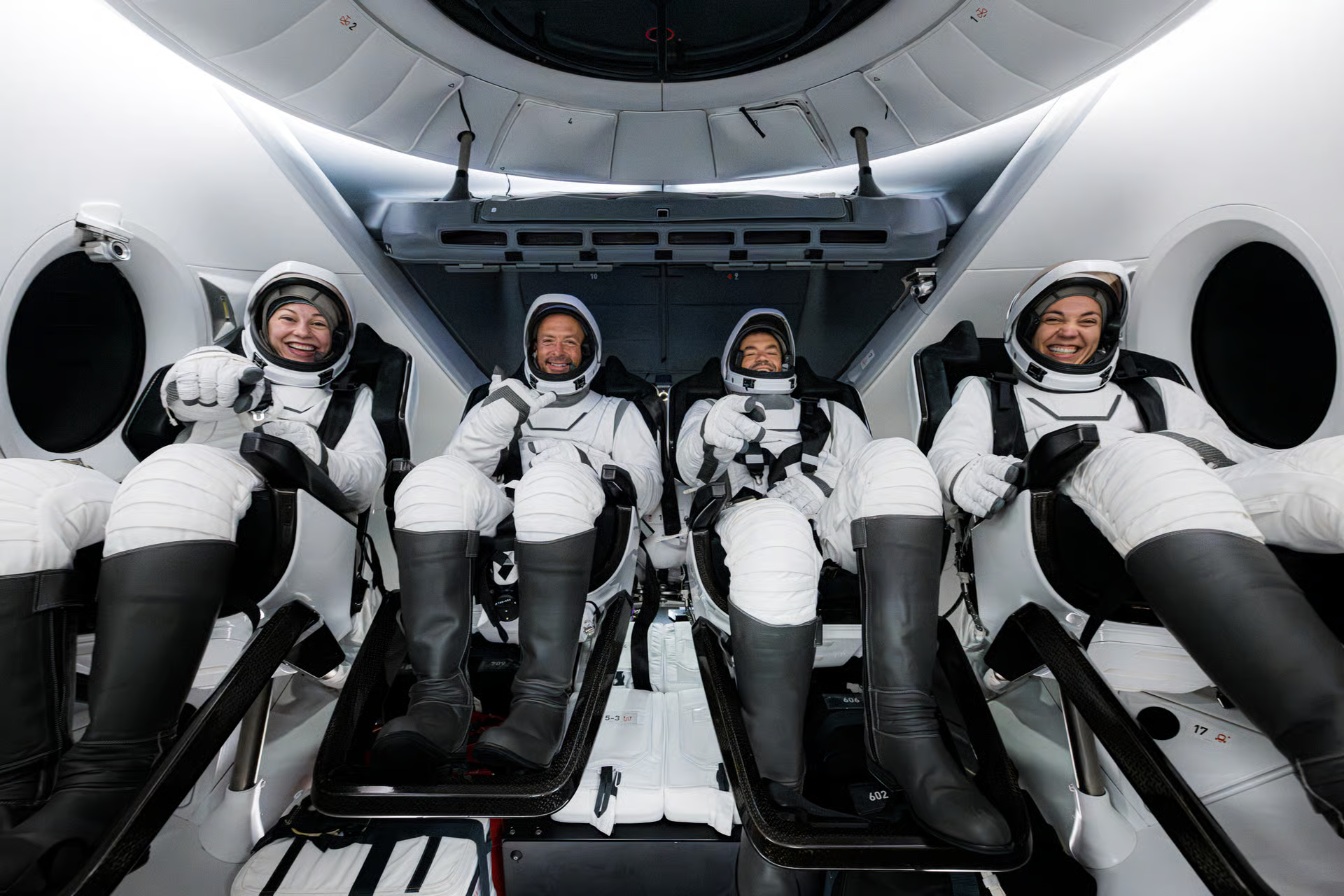
Polaris Dawn astronauts inside the Crew Dragon capsule. From left Anna Menon, Scott Poteet, Jared Isaacman, and Sarah Gillis. (Photo credit: John Kraus/Polaris Program)
What advice would you give to young people, especially girls and underrepresented groups, who dream of working in space science or becoming astronauts?
AM: My biggest advice would be to notice the intersection of what you enjoy and what you are good at, then follow that lead to guide your decisions about how to contribute to this world. To give you an example, I studied biomedical engineering, and I loved spaceflight. I never planned on going to space, but as I journeyed through life, I just kept pursuing the fields I loved and the roles in which I found I could be of service by using those interests and skills together. The opportunity to fly to space appeared because of that intersection. There are many things in life that we cannot control. I couldn't control whether I became an astronaut or whether anyone even chose to hire me for a specific job. But, what we can control is our attention to our own interests and skills and how we can decide to use that awareness to inform our decisions and preparedness each step of the way. Life has taught me that following the intersection of passion and talent causes the rest to fall into place.
SG: Don’t wait to be given permission to pursue big goals—take yourself seriously and go after what inspires you. You don’t need to follow a perfect path; you just need to stay curious, work hard and surround yourself with people who believe in your potential. Space needs diverse thinkers and perspectives, and your background isn’t a weakness—it’s your strength. If the door doesn’t open on its own, be the one who builds a new path.
What is the one memory or lesson from Polaris Dawn that you will carry with you for the rest of your life?
AM: There are so many memories and lessons I will carry with me for the rest of my life. One powerful moment was during our reentry back to Earth. The Dragon spaceship was alive with thrusters firing to ensure we maintained the proper orientation. Simultaneously, our beautiful Earth passed by the windows—our final views from space. During this moment, what struck me was how incredible humanity is and the fact that people can accomplish everything from building the cities that passed by our windows to building this spacecraft that was keeping my crew and me alive in such a dynamic and harsh environment. I felt an acute sense of awe for what people can come together to achieve.
SG: For me, it’s the moment just before stepping outside the spacecraft—suit pressurized, comms quiet, hatch ready to open. That pause felt like standing on the edge of something extraordinary. The lesson I’ll carry is that preparation is essential, but trust—in your training, your team and yourself—is what allows you to meet the moment when it finally arrives.
What are you most excited to work on together in the future, either in space or on Earth?
AM: There are a lot of exciting challenges ahead for the space industry. Among them, we are working to return to the moon and set the first human steps on Mars. I'm hungry to contribute to those endeavors in any way I can.
SG: What excites me most right now is working to scale the positive impact of Starlink on a global level. It’s not just about connectivity—it’s about unlocking access to knowledge, care and opportunity. One of the most meaningful parts of Polaris Dawn was partnering with St. Jude to connect cancer treatment clinics in underserved areas, helping extend their world-class treatment protocols to places that wouldn’t otherwise have access. That’s the kind of impact space technology can have on Earth, and I’m excited to keep working toward a future where no child is out of reach of lifesaving care because of where they live.
Join us this Friday as we celebrate the achievements, lessons and future possibilities of women leading the way in space exploration. Secure your spot for this inspiring Astronomy Night and join us for a memorable evening of exploration and discovery.
Don’t miss your chance to engage with pioneering astronauts and experience first-hand the excitement of space science, innovation and teamwork.
Register for tickets here. If you can't attend in person, the conversation will be livestreamed on Facebook, YouTube.
Admission is free, however space is limited and will be on a first come, first serve basis. Once capacity is reached the doors will close. Museum exhibitions will be closed during this event; access is limited to Hangar 1 and the Theater.
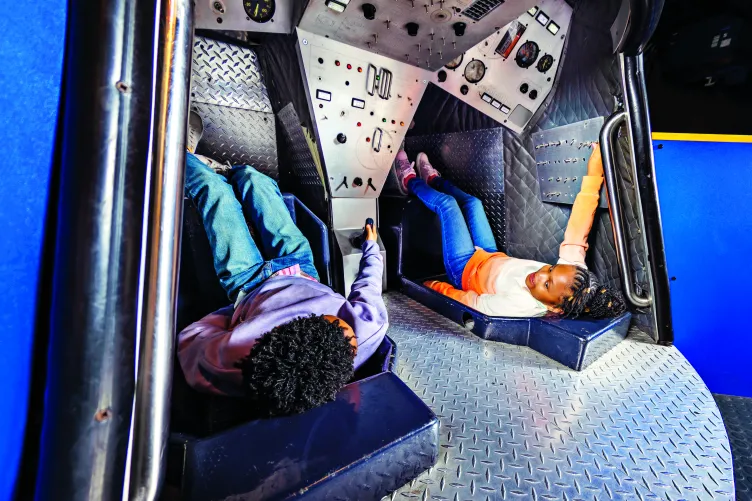
Want to visit the museum? We would love to have you! Find out all about our offerings here and plan your trip today.
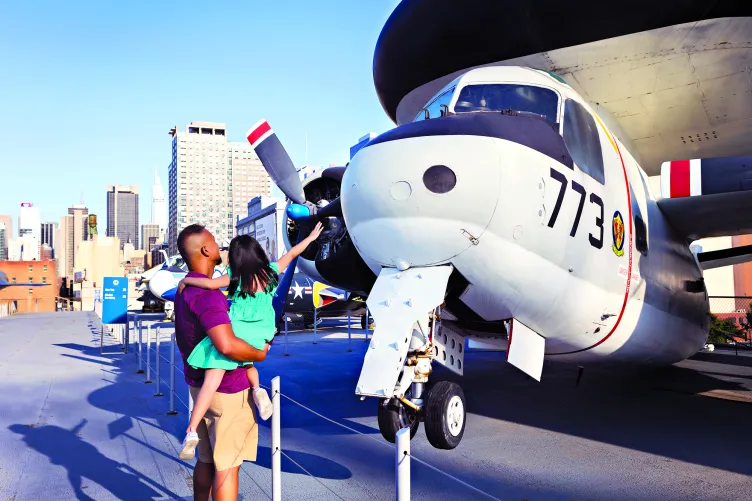
If you join our membership program you can visit the museum any time! Plus enjoy many membership perks at a discounted rate.


